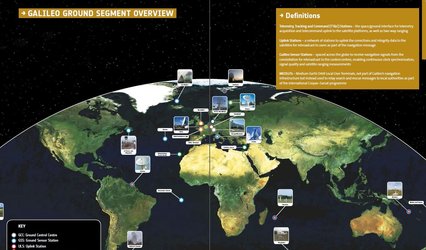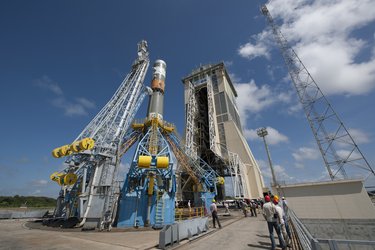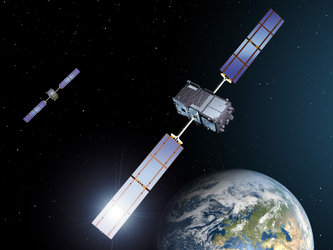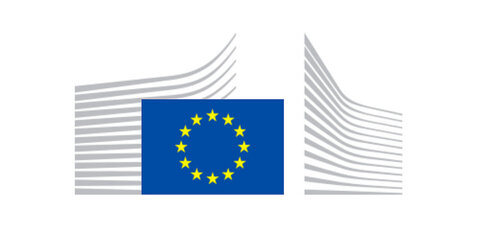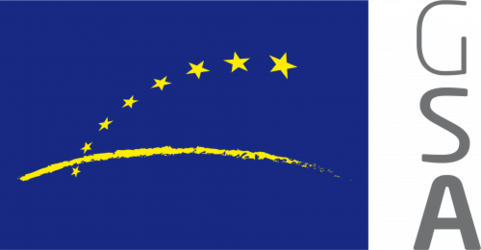Galileo on the ground
There is lot more to Galileo than just its satellites in space. A global ground network is essential to ensure the continued reliability of the time and positioning information embedded within the signals from orbit.
Keeping satellites on time and in line
Satellite navigation relies on the receiver deriving the time and point in space that a signal was transmitted to an extremely high level of accuracy. This information is embedded within the satellite signal itself. But a satellite’s onboard atomic clocks can still drift – and just a billionth of a second clock error corresponds to a 30 cm increase in ranging error. A second's clock error would put users 300 000 km off target.

So a network of ground stations continuously checks each satellite’s clock against Galileo System Time. Accurate to 28 billionths of a second, GST is generated by the Precise Timing Facilities at the Galileo Control Centres in Fucino, Italy and Oberpfaffenhofen, Germany, which are in turn cross-checked for alignment to the International Coordinated Universal Time by a group of European timing laboratories.

Satellite orbits drift as well, nudged by the gravitational tug of Earth’s slight equatorial bulge and by the Moon and Sun. Even the slight but continuous push of sunlight itself can affect satellites in their orbital paths. So the ground stations placed around the world picking up Galileo signals perform radio-ranging in reverse on the satellites transmitting them, to pinpoint their current position and identify any orbital drift.
The information on the satellites’ clock performance and positions is gathered so that a correcting message can be uplinked to the satellites for rebroadcast to users in the satellite signals themselves. Closing the loop in this way means that optimal performance can be maintained over time. The quality and reliability of each individual Galileo signal is also checked.
Galileo’s Ground Segment
The Galileo Ground Segment necessary is one of the most complicated developments undertaken by Europe, having to fulfil strict levels of performance, security and safety:
- Ground Mission Segment (GMS) - it must provide cutting-edge navigation performance at high speed around the clock, processing data from a worldwide network of stations. GMS has two million lines of software code, 500 internal functions, 400 messages and 600 signals circulating through 14 different elements.
- Ground Control Segment (GCS) - it monitors and controls the constellation with a high degree of automation.
(For now the GMS is located in the Fucino Control Centre in Italy and the GCS in the Oberpfaffenhofen Control Centre in Germany. In future the two centres will host equivalent facilities, working together as hot backups with realtime data synchronisation. In the event of the loss of one centre, the other will be able to continue operations in a seamless way.)
- Telemetry, Tracking and Command Stations two, at Kiruna in Sweden and Kourou in French Guiana.
- Uplink Stations a network of stations to uplink the navigation and integrity data.
- Sensor Stations a global network providing coverage for clock synchronisation and orbit measurements.
- Data Dissemination Network interconnecting all Galileo ground facilities.















 Germany
Germany
 Austria
Austria
 Belgium
Belgium
 Denmark
Denmark
 Spain
Spain
 Estonia
Estonia
 Finland
Finland
 France
France
 Greece
Greece
 Hungary
Hungary
 Ireland
Ireland
 Italy
Italy
 Luxembourg
Luxembourg
 Norway
Norway
 The Netherlands
The Netherlands
 Poland
Poland
 Portugal
Portugal
 Czechia
Czechia
 Romania
Romania
 United Kingdom
United Kingdom
 Slovenia
Slovenia
 Sweden
Sweden
 Switzerland
Switzerland


























